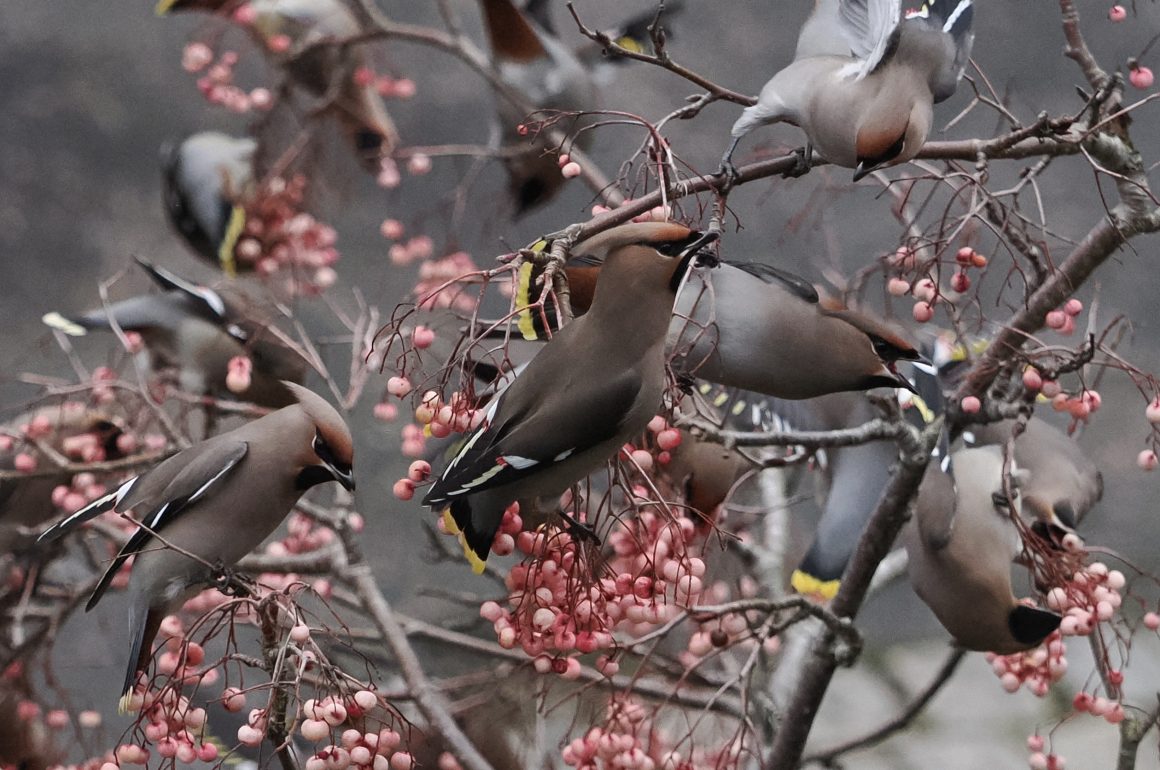
Bohemian Waxwings are the rock stars of the bird world. No other bird on the British list has quite the same allure, or ability to tempt people to travel long distances to see them. It’s not difficult to see why. For a start, they are extraordinarily beautiful birds, and there’s nothing else quite like them. Given a good view, you can’t possibly confuse one with any other bird (other than its North American cousin, the Cedar Waxwing, an exceedingly rare vagrant on this side of the Atlantic). Secondly, much of the appeal is that this is a bird we don’t see in the UK very often, for Waxwings are an irruptive species, and in most years only a few ever reach our shores from their breeding grounds in the boreal forests of Scandinavia.
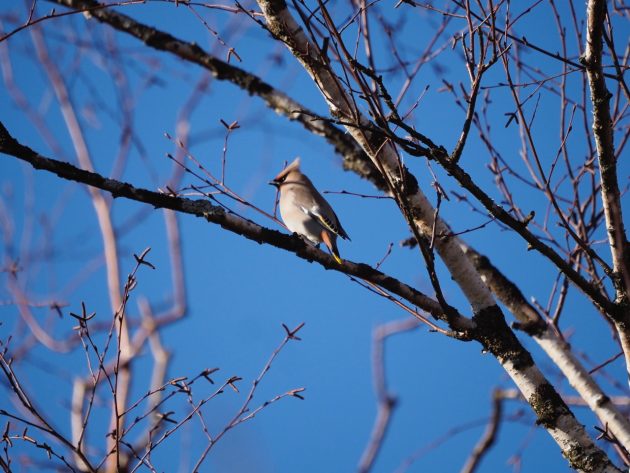
However, in a Waxwing winter such as we have just enjoyed, these birds can arrive in Britain in their hundreds or even thousands. The first birds invariably arrive on the east coast of Scotland or northern England in late October and early November. These are the advanced guard, for they are usually followed by many more, with flocks appearing all the way along the east coast. Here some will remain for days, or, if the berry supply is good, weeks, but others head inland almost at once, and it’s usually not long before flocks turn up in western Britain and even Ireland. They are fast and efficient fliers, quite capable of covering considerable distances in a short time. Incidentally, in flight they can be confused with Starlings, for their size is similar, and they travel at a similar speed.
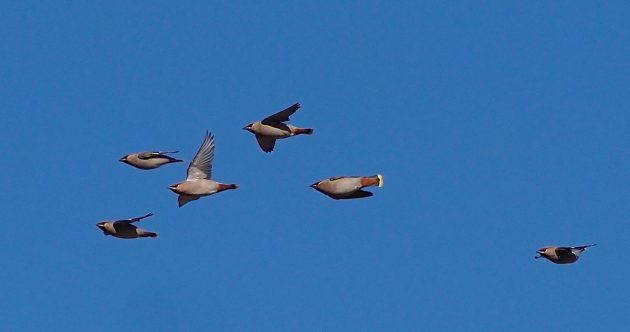
Ringing recoveries give some idea of how quickly these birds can travel. A bird ringed near Helsinki, Finland, in October 1970 was found dead, 18 days later, in the Scottish west-coast town of Stranraer, a distance of 1,800km and a minimum speed of 100km per day. However, there have been few recoveries of foreign ringed individuals in the UK, for these are birds of the northern forests where few are ever trapped and ringed. Incidentally, their range is huge and circumpolar, extending from Scandinavia all the way through Siberia to Kamchatka, and from central Alaska and British Columbia east to Hudson Bay.
For many years Waxwings were my bogey birds that I kept on missing. I’m not a twitcher, but I eventually decided that this was a bird that I really did want to see, so when I heard of a small flock frequenting rowan trees in a residential road in the Suffolk coastal town of Ipswich I decided to try and see them. A young friend, David Tipling, travelled with me from Kent. At the time I was writing about cars, so I recall we travelled in a road-test Porsche. (This was memorable, as late in the day the car got a puncture, and we had to limp home at 50mph on a skinny space-saver spare.)
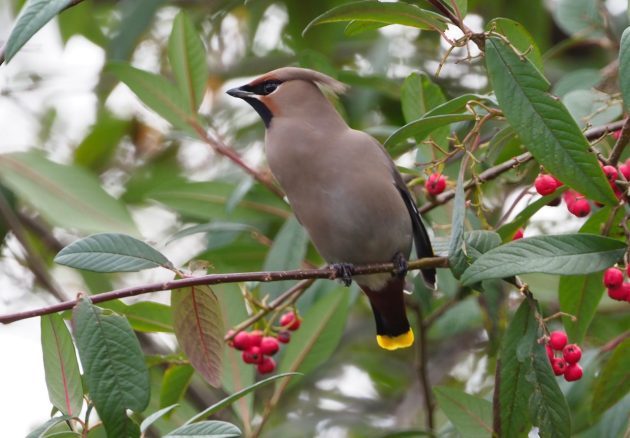
We found the quiet residential road where the Waxwings had been reported without any problem (this was long before satellite navigation systems were available). Several other would-be Waxwing watchers were already there, unlike the birds themselves. One of the residents popped out to tell us that they had been seen earlier, but not for a couple of hours. We sat for an hour waiting for them, but eventually gave up as they failed to show. However, we had heard of another Waxwing frequenting a residential road a few miles away in Great Yarmouth, so I gunned the Porsche (still with four good tyres) north. We eventually found our bird, sitting somewhat forlornly all by itself on a television aerial. I duly ticked my Waxwing, but it was a memorably disappointingly sighting.
I’m pleased to report that I’ve enjoyed many sightings in the 35 years since, every one a great deal more satisfying than that first bird. The biggest flocks I’ve seen were in the Finnish town of Oulu, just south of the arctic circle, in December. I remember watching them on a bitterly cold day when there was precious little daylight, but the deep snow that carpeted the ground reflected what little light there was. The birds were feeding with obvious urgency on rowan berries, their favoured winter food. It’s when the rowan crop fails that they irrupt south.
I’ve managed to see them, too, on their breeding grounds in Finland in summer. They’re tricky to find when breeding in the damp, mossy forests they prefer – here they favour similar habitat to Siberian Jays and Siberian Tits, and the even more elusive Red-flanked Bluetail. In summer they switch from a diet of berries to one of insects – there’s never a shortage of mosquitoes in these forests in summer.
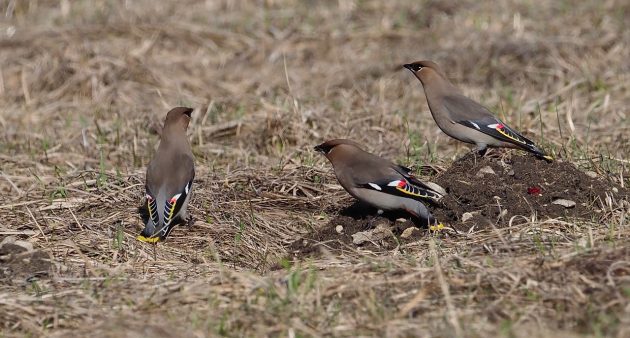
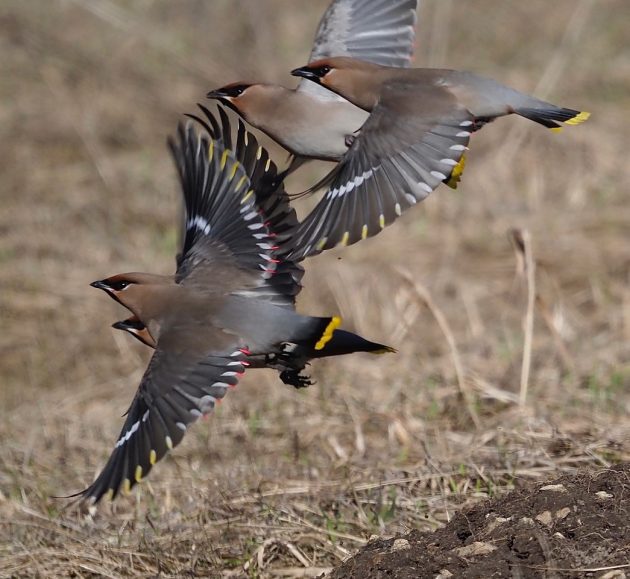
Apart from these Finnish summer sightings and a brief July encounter in Canada’s Northern West Territories near Great Bear Lake, most of my Waxwing encounters have been in winter. A year ago I was delighted to find a small flock in Estonia – it may have been late March, and so (in theory at least) spring, but it certainly felt more like winter. These birds alerted me to their presence by their delightful ringing calls. They performed in classic Waxwing fashion by feeding quickly on Guelder Rose berries, then flying back to a large tree to digest their dinner for a few minutes, before flying down again to snatch a few more berries. Curiously, they also flew down to the ground on a couple of occasions, but they didn’t stop for long before flying back to their favoured tall tree. I never did discover what was attracting them to the ground.
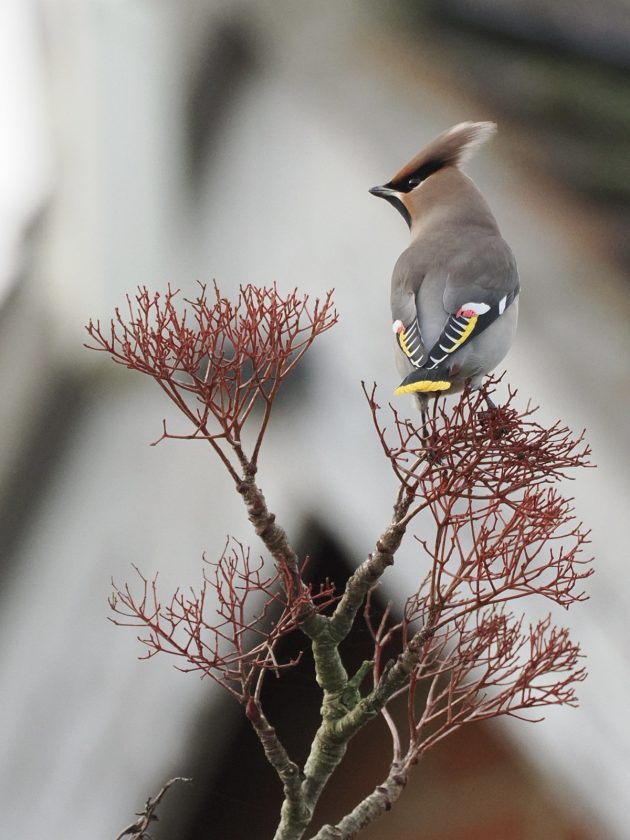
This past winter has been an exceptional one for Waxwings in Britain, with flocks and small groups spread throughout the country. I expected to come across a flock or two in the late autumn, but I only saw a single lonely individual, scoped at long range sitting in a Norfolk hedge. Meanwhile, my friend Martin Garwood, who lives 100 miles south of me in Kent, was enjoying daily encounters, and sending me stunning photographs (such as the classic portrait above) of the birds he had seen. There was even one flock he photographed from his bedroom window. Though he insists the light was poor, his resulting image (below) is quite delightful, and conveys something of the magic of watching a feeding flock. Waxwings are remarkably acrobatic birds, as Martin’s busy shot shows so well.
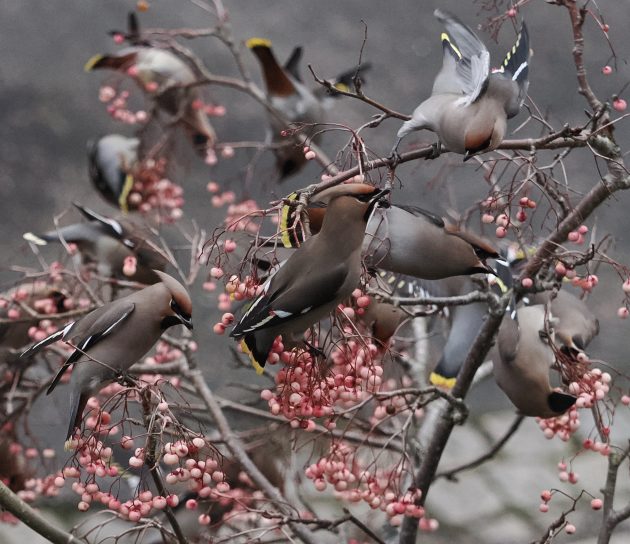
Frustratingly, no flocks appeared anywhere near my Suffolk home. I was starting to suspect that the winter would pass me by with no satisfactory encounters with these beautiful birds. However, a flock of over 30 was being recorded daily from Norwich Research Park, which is only 20 miles from home, so I eventually gave in and went to see them. Remarkably, I found them instantly, though nobody else was watching them. The Research Park clearly provided perfect habitat, with lots of ornamental berry-bearing bushes, so it was obvious why the flock had stayed there for so long.
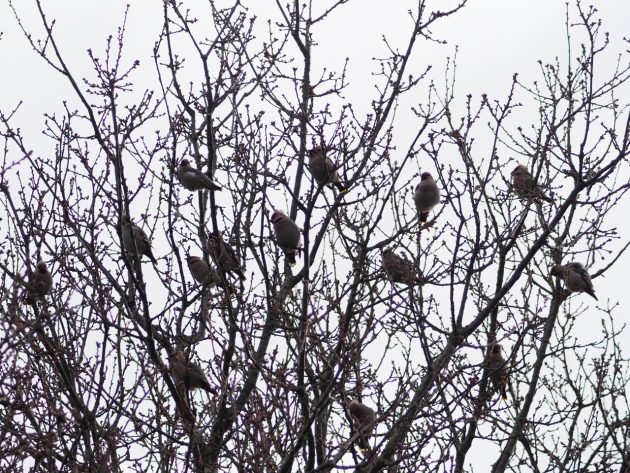
I was entertained as they commuted between a tall oak tree, where they liked to sit and digest (above), and a nearby cotoneaster tree that was smothered in bright red berries. My maximum count was 33 individuals. Despite the light being poor, I did manage to capture some satisfying shots (see below). They were certainly worth the effort to go and see them, while it might well be some years before we enjoy another Waxwing winter as good as this one has been.
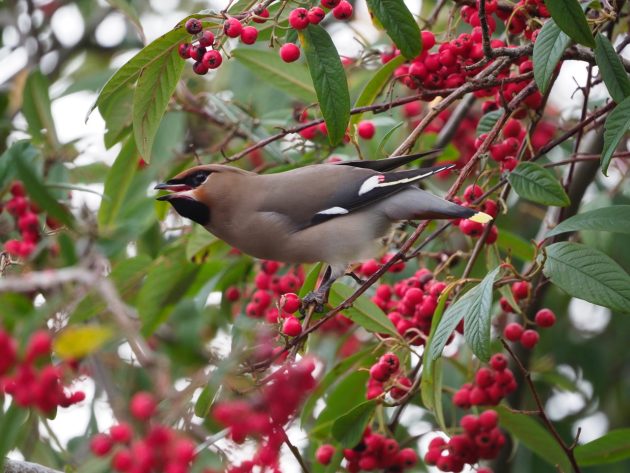
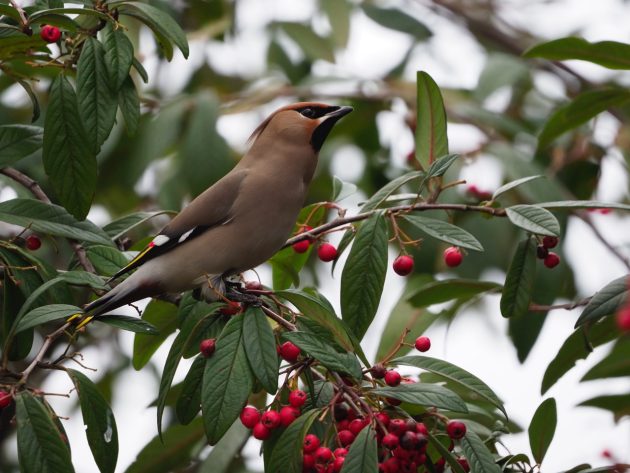










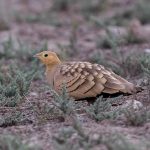


For many years Waxwings were my bogey birds that I kept on missing… I could write those words myself. Lovely bird and lovely photographs – really enjoyed this post, David.